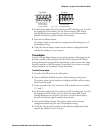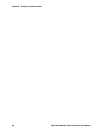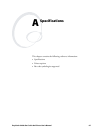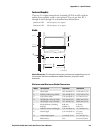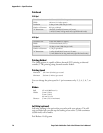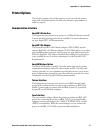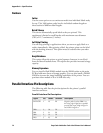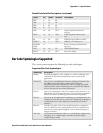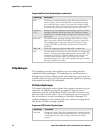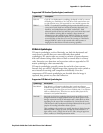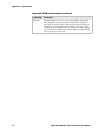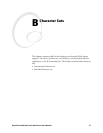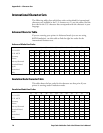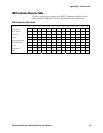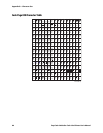
Cd 39 Helvetica CondensedHelvetica Appendix A— Specifications
EasyCoder 3400e Bar Code Label Printer User’s Manual 73
Parallel Interface Pin Descriptions (continued)
Signal Pin Return Direction Description
DB4 6 24 IN
DB5 7 25 IN
DB6 8 26 IN
DB7 9 27 IN
ACK 10 28 OUT Negative pulse. Data has been
received.
BUSY 11 29 OUT If HIGH, printer cannot receive
data.
PE 12 30 OUT If HIGH, out of ribbon or media.
SELECT 13 - OUT Pulled to +5V. Printer is on.
CHASSIS
GND
17 - - Printer’s chassis gnd isolated from
logic gnd.
INIT 31 16 IN Clears I/OINT0 latch.
FAULT 32 33 OUT See printer display.
Bar Code Symbologies Supported
The e series printers support the following bar code symbologies.
Supported Bar Code Symbologies
Symbology Description
Codabar Originally developed in 1972, Codabar is a numeric symbology most
commonly used in libraries, blood banks, and air parcel express
applications.
Code 2 of 5 Code 2 of 5 is a straightforward numeric symbology developed in the
late 1960s. It has been used for warehouse sorting systems,
photofinishing envelope identification, and for tracking sequentially
numbered airline tickets. All information is contained in the width of
the bars; the spaces do not contain information.
Code 11 Code 11 was developed in early 1977 to satisfy requirements for a very
high density, discrete numeric bar code. The most extensive application
of Code 11 has been for labeling telecommunications equipment.
Code 39 Code 39 is the first alphanumeric symbology ever developed and is the
standard non-retail bar code. It is a discrete, self-checking symbology of
variable length and is used mostly by the automobile and medical
industries.
Code 93 Introduced in 1983, Code 93 was specially designed to complement
Code 39. With the correct reading equipment, the two alphanumeric
codes may be interchanged throughout a system without making any
changes to software.
Code 128 Code 128 was introduced in 1981 as a very high density, alphanumeric
symbology. It is a variable length, continuous code that employs
multiple element widths.



